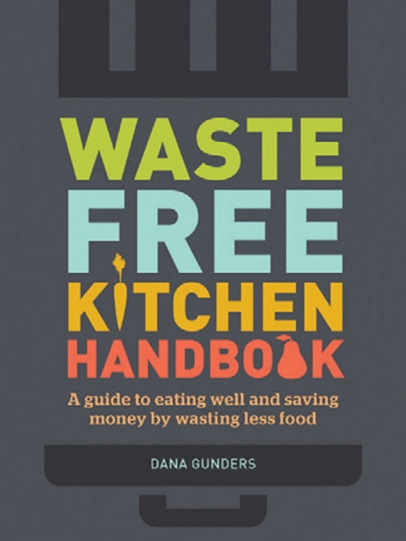Waste Free Kitchen Handbook by Dana Gunders
There’s a rekindled interest in reducing food waste—for a number of reasons, which include saving money, reducing hunger and reaping maximum benefit from the land, water, labor and other resources used to produce food. Amid all the discussion, though, it can be confusing to know where and how to start better utilizing the food you have so that less gets tossed.
This is where Dana Gunders’ brand-new Waste Free Kitchen Handbook: A Guide to Eating Well and Saving Money by Wasting Less Food (Chronicle Books, 2015) comes in.
Gunders approaches the topic like a regular Jane, though she’s a project scientist working on food and agriculture with the Natural Resources Defense Council and could probably get pretty wonky if she wanted to.
Showing readers the way to be “food waste warriors,” she breaks down the transformation into bite-size strategies that can be woven into existing routines.
Gunders dives into grocery shopping, meal planning, food storage, using food scraps, composting and even gives some recipes. Sour milk pancakes take advantage of milk that’s begun to turn and overripe avocadoes star in Buried Avocado Chocolate Mousse.
“Can I eat that?” helps readers use ingredients for as long and safely as possible. After the age-old smell test, it’s nice to have tips on what is safe to eat versus what to steer clear of. Color change in meat is normal, so it falls into the category of generally harmless, she writes, but not if it also has “off -smells or slimy or sticky surfaces.”
A whopping 50–90% of Americans misinterpret date labels on food, she notes, causing them to pitch food before its time. Without a legal definition of “use by” in most states, it’s “almost never legally distinguished from ‘best before’ or even ‘sell by.’” The take away: “Food past its date is not necessarily bad.”
Here’s a sampling of Gunders’ food waste strategies:
• Use the leaves around the cauliflower like cabbage.
• Freeze whole ginger in an airtight container and cut slices as needed. (The thawed texture will be soft, but the flavor is fi ne for cooking.)
• Sprinkle lemon or lime juice over the cut surfaces of an underripe avocado. Close the halves around the pit, wrap tightly and refrigerate. Check it every so often to see if it’s ripened enough to eat.
• Store meat, poultry and fish on the bottom shelf in the refrigerator, which is the coldest spot.





